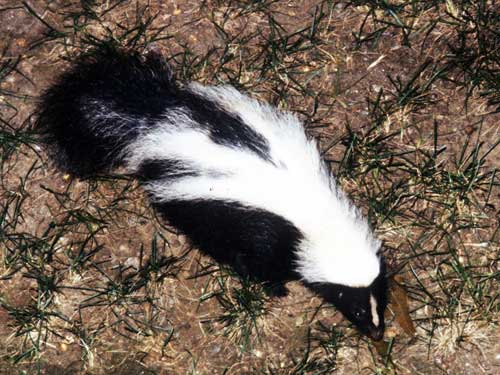What Animal Is Digging Up My Lawn
Gain a better idea of which critter is digging upwardly your yard or garden by the damage they cause.
"Fee, fie, fo, fum. I run across the dirt from some furry bum." Many accept walked into the yard and institute perplexing piles of soil in their backyard or flower beds. They want to know what critter made the heap and are worried that information technology means something worse is going wrong. There are several animals that are common yard visitors. Keep in mind that the usual motivation for digging up yards comes downwards to ii things: food and lodging. The fourth dimension of the year makes a deviation in the frequency of digging. Oftentimes, more damage occurs in the fall and leap. Michigan State Academy Extension hotlines receive many calls at sure times of the twelvemonth nigh mystery mounds.
In the fall, animals are trying to pick up every bit many calories as possible to go far through the winter. The fatter they are, the better chance they accept of living long and prospering. In the spring, these same animals are trying to regain weight, peculiarly if there has been a great deal of snow cover or extremely cold weather. Food hunting is "chore one." It is possible to identify the digger by the clues left at the scene of the offense. Let's look at the three principal suspects.
Shallow holes in the footing, surrounded by a ring of loosened soil
Skunks are often the cause of these clues. The soil disruption happens overnight because skunks are nocturnal feeders. The pigsty is approximately the size of a skunk nose. The skunk presses its olfactory organ to the soil and digs with its long, front end claws. Skunky knows that just below the surface is a poly peptide-rich care for, merely waiting to be harvested. There tin can be then many holes that they coalesce into an area the looks like it has been tilled.

Striped skunk. Photo credit: Alfred Viola, Northeastern University, Bugwood.org
In the fall and all during the growing season, skunks are on the patrol for earthworms, grubs and a variety of soil insects. Their diets besides include crayfish, small animals, birds and their eggs, frogs and turtle eggs – if they can find them. Skunks bask a diet that extends into fallen fruit like mulberries, raspberries, cherries and grapes. They don't jump and cannot climb to any extent, so they piece of work close to the basis.
Chunks of sod that have been ripped up and flipped over
Raccoons savor diets that are almost identical to skunks, merely raccoons utilise their front paws like hands. They volition pull and flip pieces of sod. This behavior is quite mutual on newly laid sod or grass with shallow roots. Ripping and vehement is easier. Since skunks and raccoons can be feeding during the night in the same area, you may wake to a powerful skunk odour. The gentle skunk is being harassed by the lawn bully raccoon.
Mounds of loose soil on the lawn
Moles leave piles of soil on the surface considering they are pushing them up from below. There are no visible holes. In warm weather condition, the star-nosed mole works nigh 6 inches or more below the surface and periodically pushes soil upwards to make an air vent. At the same time, the eastern mole is tunneling just below the surface and you can walk on its created trail.
During the winter when the ground is partially frozen, both kinds of moles will button up piles of soil when they are active. They are feeding on earthworms and maybe grubs and soil insects. For more data on moles, see the MSU Extension article "Moles in the lawn."
Run across my article on what smart gardeners can do to discourage these dirty devils, "Reduce lawn and garden damage caused by moles, skunks and raccoons." Notice that it is "discourage" rather than "eliminate." It's tough to fight Mother Nature and her gang.
Related MSU Extension articles
- "Preserve landscapes and gardens past discouraging deer, woodchucks and rabbits"
- "Reduce lawn and garden damage caused by moles, skunks and raccoons"
Source: https://www.canr.msu.edu/news/whos_that_digging_in_my_yard_skunks_raccoons_or_moles
Posted by: vaughtthastenthe.blogspot.com

0 Response to "What Animal Is Digging Up My Lawn"
Post a Comment